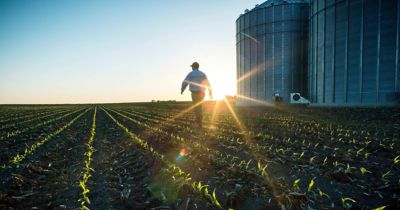Seeding Rate Calculator
The Pioneer Seeding Rate Calculator generates seeding rate recommendations for Pioneer® products within minutes.
See Now
Pioneer agronomy experts and Granular Data Scientists debunk three top planting myths and distill data for your state to drive your decisions this spring.
"For decades, common practice has been to plant soybeans after corn, but research shows that moving soybean planting earlier can add yield. Early planted soybeans generally reach canopy closure sooner, intercept more sunlight, and spend longer duration in reproductive growth, all of which lead to high yield potential. Make the decision on what to plant first based upon individual field conditions and what hybrid or variety will go on it."
- Dr. Mark Jeschke, Pioneer Agronomy Manager

Iowa Corn Planting Dates
Iowa Soybean Planting Dates
"Seeding rates may vary from year to year, and over the past 3 decades, we have seen an average increase of 255 seeds per acre in the U.S. and Canada. Your seeding rate should be based on individual hybrids, field conditions at planting and your yield goals. Using these three factors will help you select the best seeding rate for your farming operation. The seeding rate may vary from field to field and year to year."
- Matt Essick, Pioneer Agronomy Manager

Iowa Corn Seeding Rates
Iowa Soybean Seeding Rates
"You really can’t plant corn too deep. If you want an even stand, stay between 2 to 2.5 inches. At 1.5 inches or less, you’re going to fight topsoil variability and temperature. And I don’t recommend “cheating” on planting depth even on your higher-yielding, better ground. It’s rewarding to see that quick emergence with shallow planting, but it will be fleeting as you fight uneven emergence and potential yield loss the rest of the season. As with any agronomy principle. there are exceptions, but it’s typically better to err on the side of too deep versus too shallow with corn planting depth, especially with lighter or sandier soils.”
- Dr. Mary Gumz, Pioneer Agronomy Manager
"The grouping of this year’s data provides a more meaningful analysis of regions that are aligned on soil type, climate, and length of growing season. Backed by 24M acres and 7 years of data, our hope is that growers can use these analyses as a reliable benchmark to make their own decisions of seeding rate, planting date, and hybrid maturity to maximize their yield this growing season."
- Hayden Schaumburg, Data Analyst, Granular
See the most profitable planting dates on your farm last year.
Sign up for our Walking Your Fields® e-Newsletter: your go-to source for timely, local agronomic information to help you maximize the profit potential of your acres.
Sign Up Now
State-based insights are based on more than 40 million acres from 2022 compiled by Granular Data Scientists.
All individual data and information shared with Granular - electronic or otherwise - submitted by farmers in connection with our tools and services will never be shared unless authorized by the farmer. Granular does compile or aggregate data segments or groups to look for averages, trends and other key indicators to help make operations more productive and profitable.